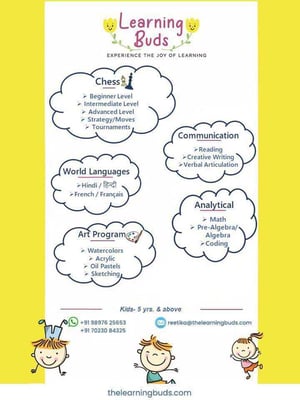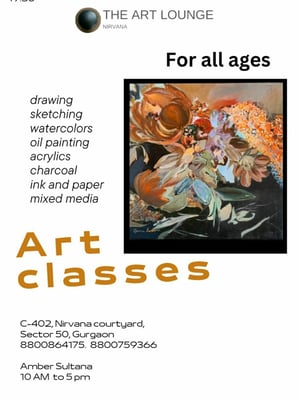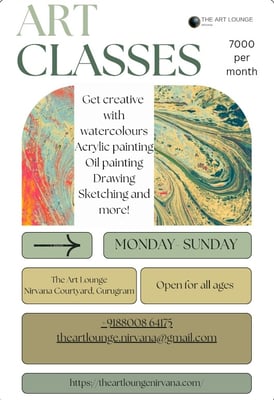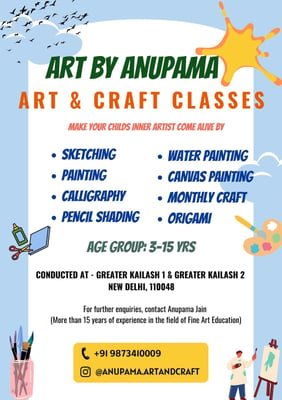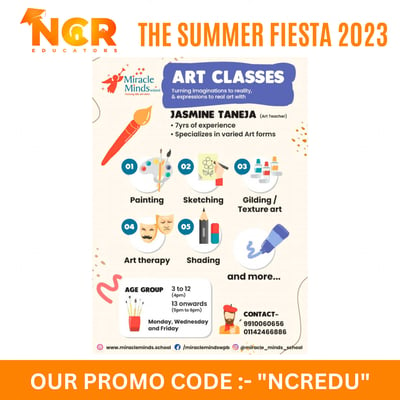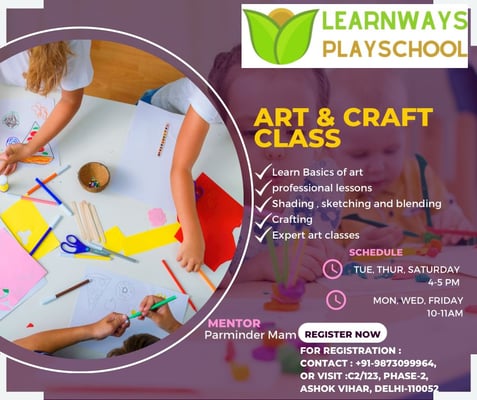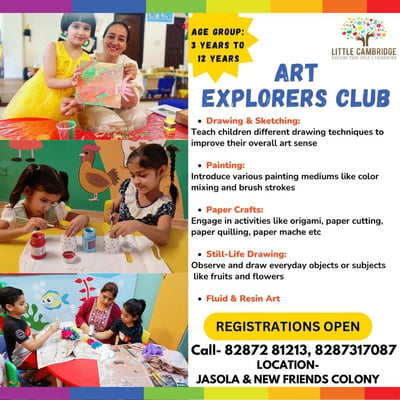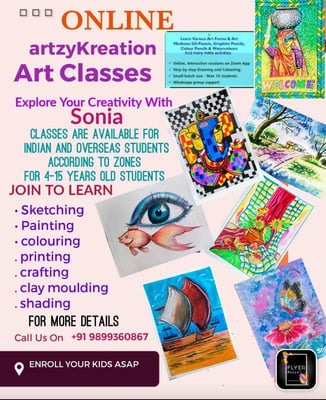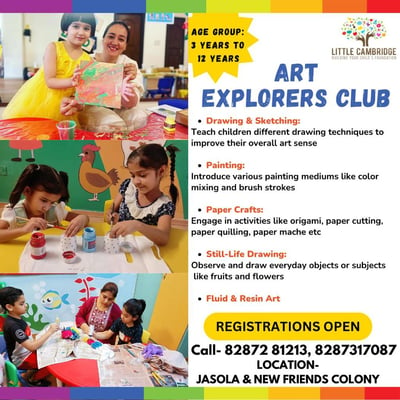Sketching classes for Kids - 58 options found
Sketching classes for children aged 2 to 15 offer numerous b... Sketching classes for children aged 2 to 15 offer numerous benefits, including fine motor skill development, cognitive stimulation, creativity, emotional expression, confidence building, and improved communication skills. Through guided instruction and practice, children enhance hand-eye coordination, observation skills, and self-expression while exploring their imagination and artistic abilities. Sketching fosters a sense of achievement and self-confidence as children see progress in their artwork and receive positive feedback from teachers and peers. By providing a supportive environment for artistic exploration and expression, sketching classes empower children to develop essential life skills and cultivate a lifelong appreciation for art and creativity. Read more
the art league-art classes
the art lounge-art classes
art by anupama-art & craft classes
ncr educator n miracle minds school-art classes
learnways playschool-art & craft class
the little cambridge-art explorers club
little bunnies-art drawing lessons
nidhi art gallery-drawing & painting classes
kalakrit art studio-art classes
Advantages of Sketching Classes for Children Ages 2 to 15
Introduction
Sketching classes offer children aged 2 to 15 an opportunity to explore their creativity, develop artistic skills, and express themselves through drawing. These classes provide numerous benefits, including cognitive development, fine motor skill refinement, self-expression, and personal growth. In this guide, we will explore the advantages of sketching classes for children in this age range, along with addressing potential limitations and common questions.
Advantages
-
Fine Motor Skill Development:
- Hand-Eye Coordination: Sketching requires precise hand movements and coordination as children manipulate drawing tools such as pencils and markers to create lines and shapes.
- Control and Precision: Practicing sketching improves fine motor skills as children develop control over their hand movements, strokes, and shading techniques.
-
Cognitive Development:
- Observational Skills: Sketching encourages children to observe and interpret their surroundings, enhancing visual perception and attention to detail.
- Spatial Awareness: Drawing objects in proportion and perspective fosters spatial reasoning skills as children learn to represent three-dimensional forms on a two-dimensional surface.
- Problem-Solving: Sketching involves problem-solving as children make decisions about composition, scale, and proportions while creating their drawings.
-
Creativity and Imagination:
- Self-Expression: Sketching allows children to express their thoughts, feelings, and ideas visually, fostering creativity and imagination.
- Exploration of Ideas: Sketching encourages experimentation and exploration as children brainstorm, doodle, and sketch out different concepts and designs.
-
Emotional Expression:
- Cathartic Release: Sketching serves as a therapeutic outlet for emotional expression, allowing children to process their emotions and experiences through art.
- Self-Reflection: Drawing enables children to reflect on their thoughts and experiences, promoting self-awareness and introspection.
-
Confidence Building:
- Sense of Achievement: Completing sketches and seeing progress over time boosts children's self-esteem and confidence in their artistic abilities.
- Positive Feedback: Encouragement and positive feedback from teachers and peers reinforce children's confidence and motivation to continue practicing and improving.
-
Communication Skills:
- Visual Communication: Sketching enhances children's ability to communicate visually, conveying ideas and concepts through drawings and illustrations.
- Storytelling: Sketching supports narrative development as children illustrate stories, characters, and scenes, enhancing their storytelling skills.
-
Attention and Focus:
- Concentration: Sketching requires focused attention and concentration as children immerse themselves in the creative process, blocking out distractions and staying engaged in their artwork.
- Mindfulness: Sketching can promote mindfulness and relaxation as children become absorbed in the present moment, enjoying the sensory experience of drawing.
Limitations
-
Skill Level Variation:
- Diverse Abilities: Children may have varying levels of skill and experience in sketching, which can present challenges for instructors in providing instruction tailored to individual needs.
- Frustration: Children with limited drawing skills may experience frustration or discouragement if they perceive their drawings as inferior to those of their peers.
-
Resource Constraints:
- Access to Materials: Providing adequate drawing materials such as paper, pencils, erasers, and coloring supplies may be costly, particularly for large classes or low-income students.
- Space and Facilities: Classrooms or studio spaces suitable for sketching instruction may be limited, impacting the quality of the learning environment.
Common Questions
-
At What Age Should Children Start Sketching Classes?
- Children can start exploring sketching and drawing as soon as they can hold a crayon or pencil, typically around toddlerhood. Early exposure to drawing activities can foster a love for art and creativity from a young age.
-
How Can Parents Support Their Children's Interest in Sketching?
- Parents can encourage their children's interest in sketching by providing access to drawing materials at home, displaying and praising their artwork, and enrolling them in sketching classes or workshops. Encouraging creativity and offering positive reinforcement are essential for nurturing their artistic abilities.
-
What Career Opportunities Are Available for Skilled Sketch Artists?
- Skilled sketch artists may pursue careers in various fields such as illustration, animation, graphic design, architecture, fashion design, and industrial design. Proficiency in sketching is valuable for visual communication and concept development in these professions.
-
Is Sketching Only for Artistically Inclined Children?
- No, sketching is a skill that can be learned and developed with practice and guidance. While some children may demonstrate natural talent or interest in art, others can benefit from instruction and practice to improve their drawing skills and creativity.
Conclusion
Sketching classes offer numerous advantages for children aged 2 to 15, including fine motor skill development, cognitive stimulation, creativity, emotional expression, and confidence building. While there may be challenges related to skill level variation and resource constraints, the benefits of sketching education outweigh the limitations. By providing opportunities for children to explore their creativity and develop their artistic skills in a supportive and encouraging environment, educators and parents empower children to express themselves artistically, communicate visually, and cultivate a lifelong passion for art and creativity.

